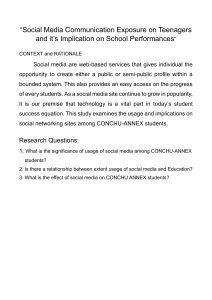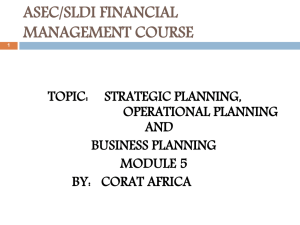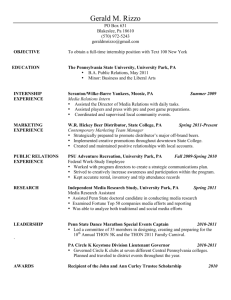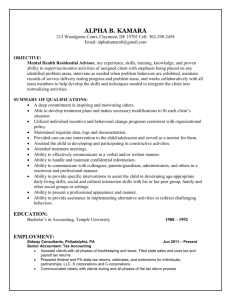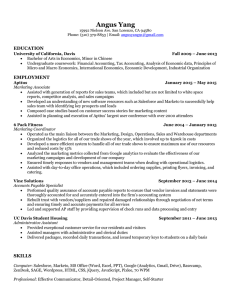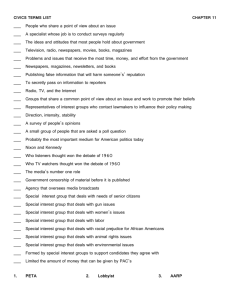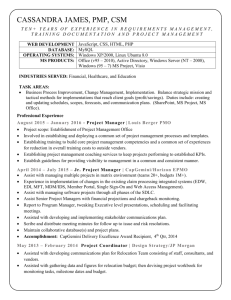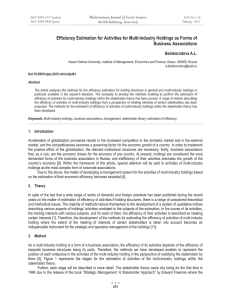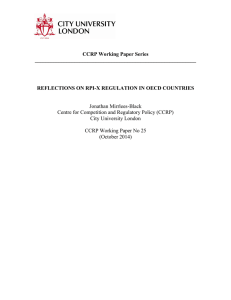Regulation What is it?, Why Study?, How Study?
advertisement
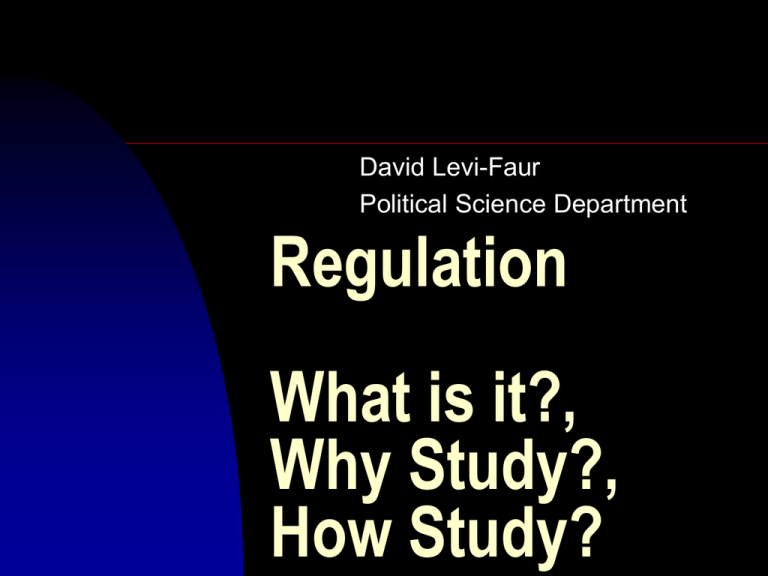
David Levi-Faur Political Science Department Regulation What is it?, Why Study?, How Study? Introduction Regulation - what is it? - wide-scope definition, narrow scope definition, history-oriented definition, characteristics o f regulatory politics Type of Policies: Allocation re-distribution Developmental Regulative State Formation The Developmental State The Welfare State The Regulatory State Types of Regulation (1) Cost of Service Regulation Entry Standards Content Types of Regulation (2) Economic Regulation - deals with the economic aspects of the market Social Regulation - deals with the social (externalities) outcomes of the market Key Features of Economic and Social Regulation Regulation Economic Features Regulation Social Regulation Focus of Agency Structure Single Industry Commission Multi-industry activity Executive agency Focus of Rules Political Context Entry, price, service producers, officials Standards Diverse interests Types of Regulation (3) 1. Pure private regulation: regulation and implementation is done by the industry without state support; 2. state assisted private regulation:rules are made autonomously by private organizations or private representatives on semi-public bodies with the (indirect) backing of statutory power. 3. Private assisted state regulation: state rules laid down in law are to be significant extent implemented by private or semi-public bodies. Regulatory reform Deregulation Re-regulation Liberalization Types of Regulation (Comparative legal perspective) strict vs. open ended; adversarial vs. consensual; Types of Regulation (Economic perspective) rate of return regulation (cost-plus) vs. incentive regulation, RPI-X). עליית העסקים הגדולים החל מאמצע המאה ה19 - התגובה האירופאית התגובה האמריקאית רגולציה הלאמה שינוי 1970s-1980s הפרטה +דה-רגולציה רה-רגולציה דה-רגולציה רה-רגולציה
